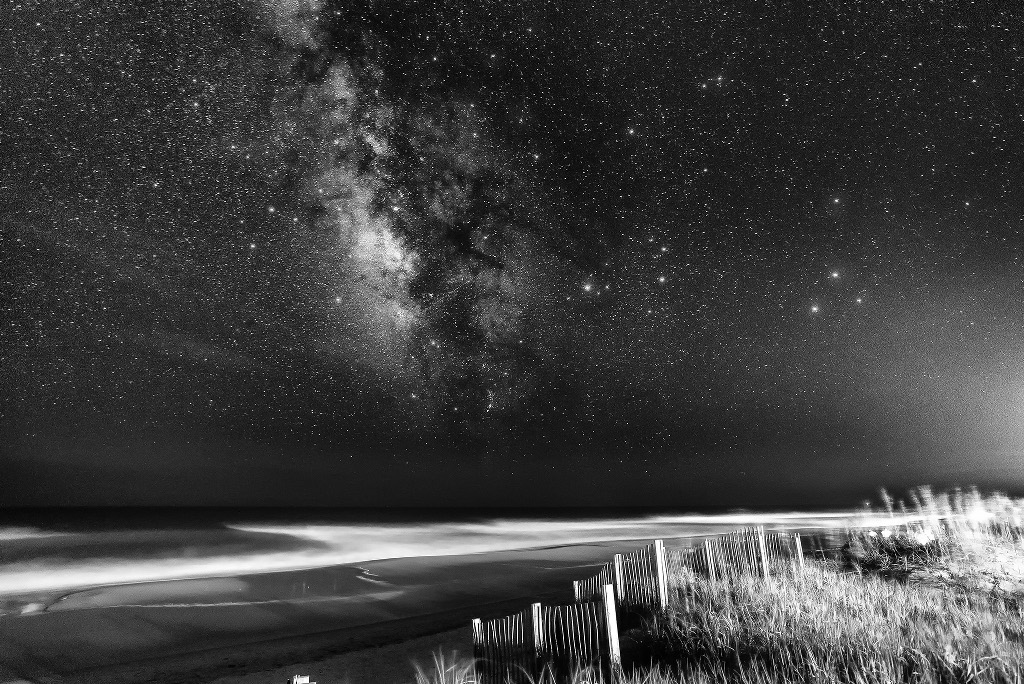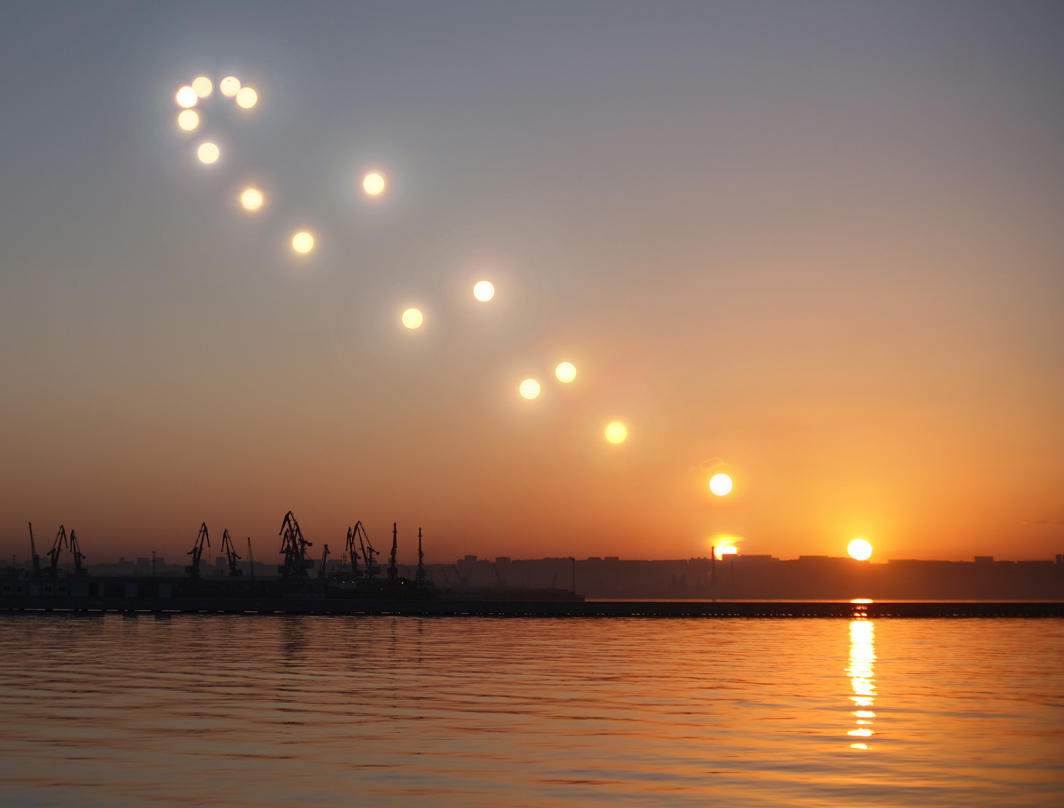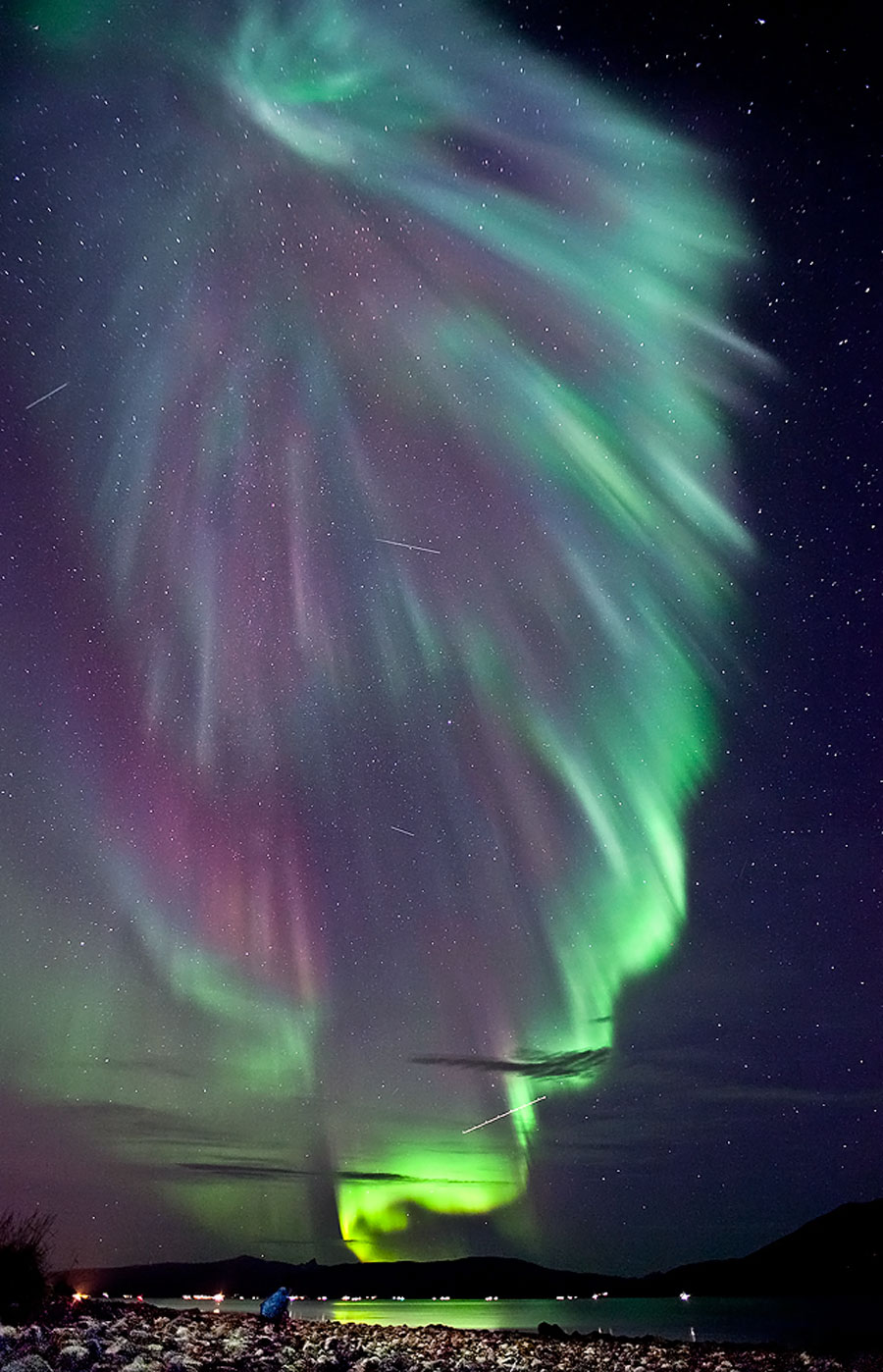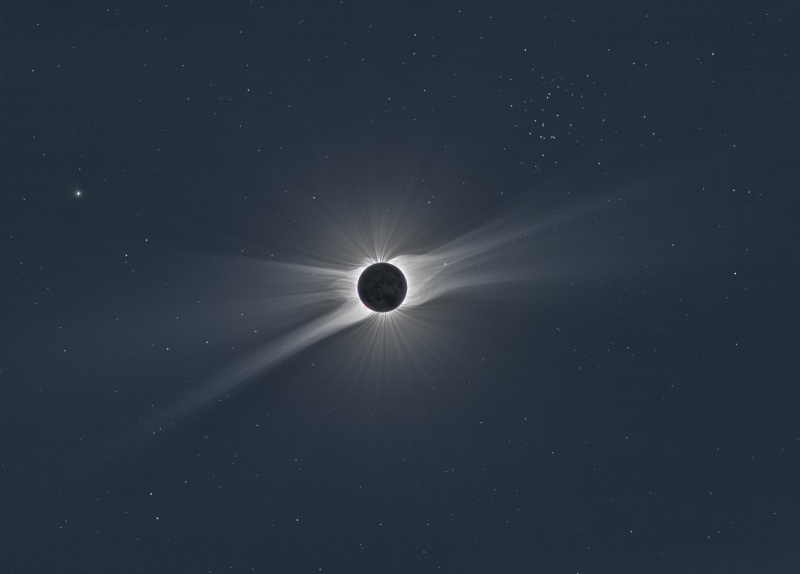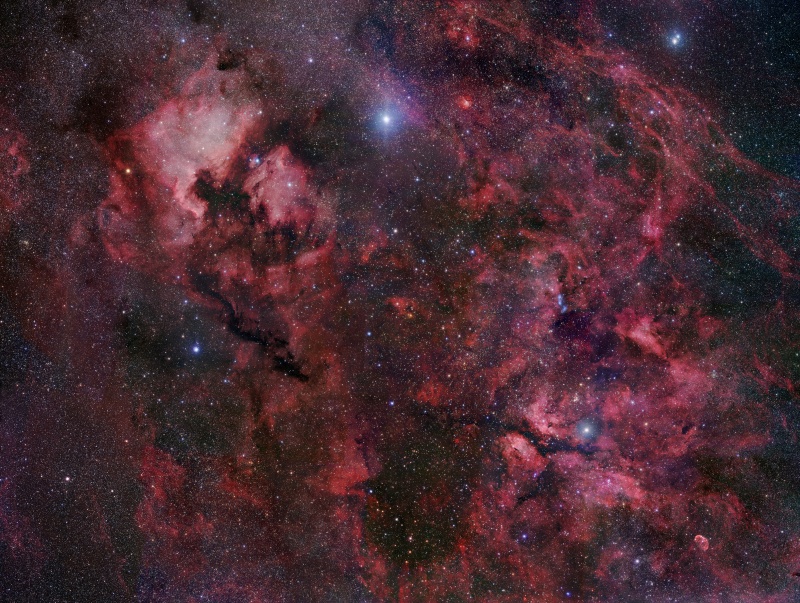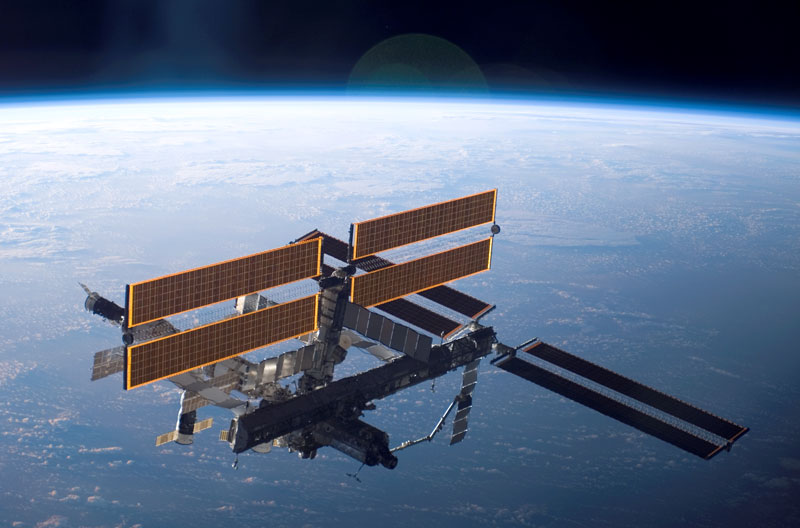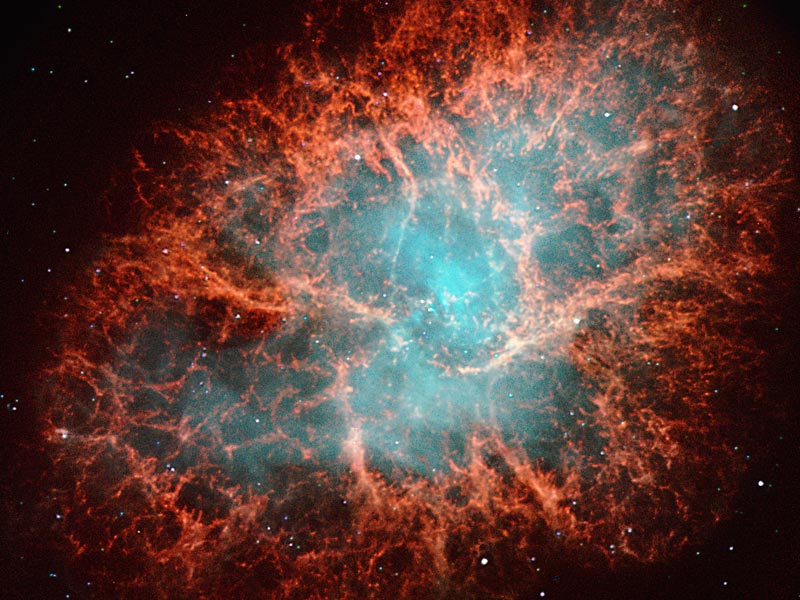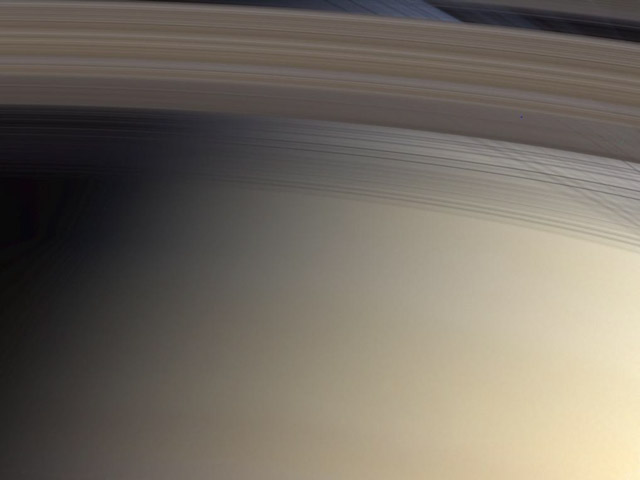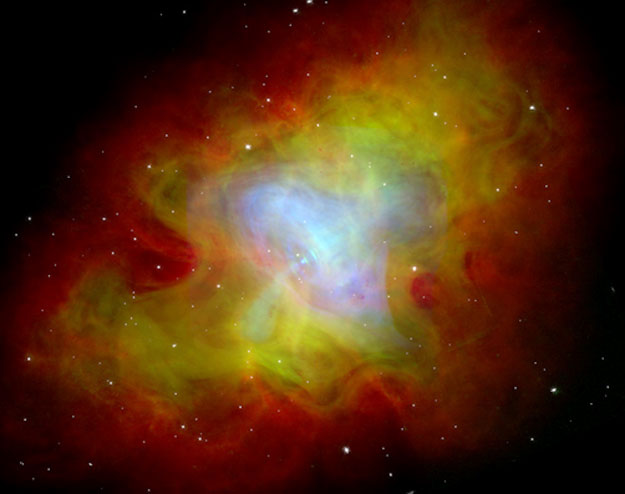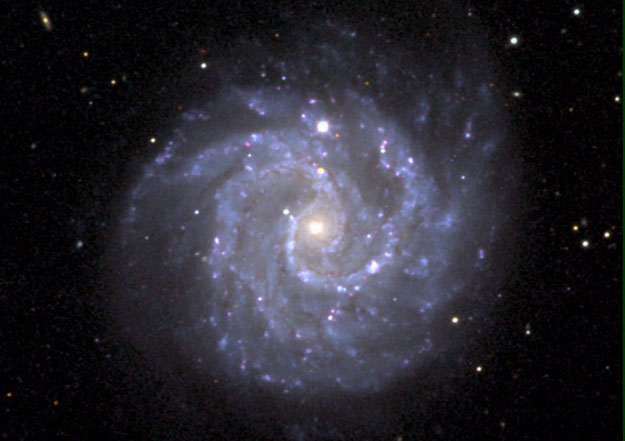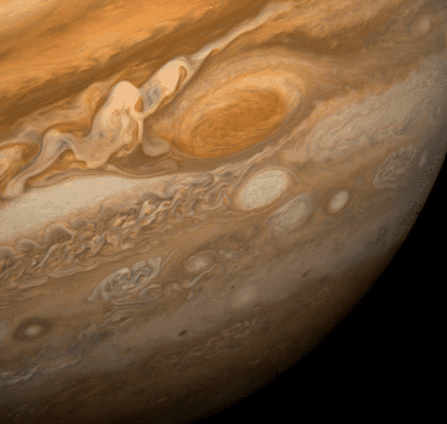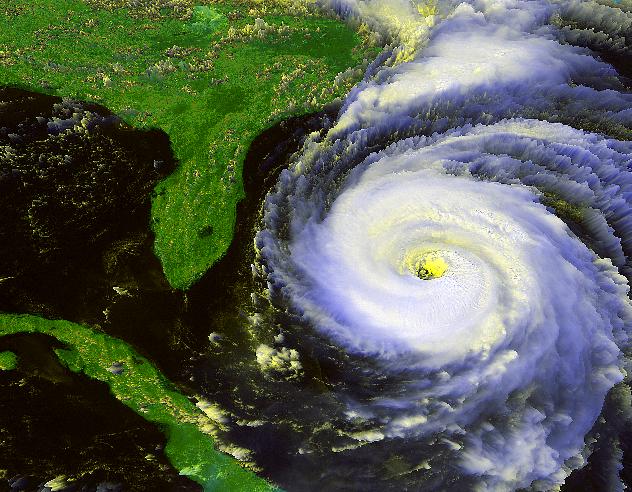| << Previous | Index | Next >> |
2015 Do some surface features on Enceladus roll like a conveyor belt? A leading interpretation of images taken of Saturn's most explosive moon indicate that they do. This form of asymmetric tectonic activity, very unusual on Earth, likely holds clues to the internal structure of Enceladus, which may contain subsurface seas where life might be able to develop. Pictured above is a composite of 28 images taken by the robotic Cassini spacecraft in 2008 just after swooping by the ice-spewing orb. Inspection of these images show clear tectonic displacements where large portions of the surface all appear to move all in one direction. On the image right appears one of the most prominent tectonic divides: Labtayt Sulci, a canyon about one kilometer deep. The small magnitude of Enceladus' wobble as it orbits Saturn might indicate damping by a globally extending underground ocean layer.
2014 Against dark rifts of interstellar dust, the ebb and flow of starlight along the Milky Way looks like waves breaking on a cosmic shore in this night skyscape. Taken with a digital camera from the dunes of Hatteras Island, North Carolina, planet Earth, the monochrome image is reminiscent of the time when sensitive black and white film was a popular choice for dimmly lit night- and astro-photography. Looking south, the bright stars of Sagittarius and Scorpius are near the center of the frame. Wandering Mars, Saturn, and Zubenelgenubi (Alpha Librae) form the compact triangle of bright celestial beacons farther right of the galaxy's central bulge. Of course, the evocative black and white beach scene could also be from that vintage 1950s scifi movie you never saw, "It Came From Beyond the Dunes."
2013 Colorful stars trail through this late summer, night skyscape from Cape Cod, Massachusetts. The picture was composed by stacking 12 consecutive 1 minute long digital camera exposures to follow the trails, a reflection of our fair planet's daily rotation. It also records faint clouds of the Milky Way in the clear sky, stretching above a local drive-in movie theater. In fact, watching movies from cars at the drive-in was once a more common night time activity. But while the stars still shine, drive-in theaters have faded from the American landscape over the decades since the 1950s. Still, this recent scene includes a short exposure made as the projector beamed a space age image to the movie screen, and drive-in skygazers watched a view of the Earth below the International Space Station, under the stars above.
2012 An analemma is that figure-8 curve that you get when you mark the position of the Sun at the same time each day throughout planet Earth's year. In this case, a composite of 17 individual images taken at 0231 UT on dates between April 2 and September 16 follows half the analemma curve. The scene looks east toward the rising sun and the Caspian sea from the boardwalk in the port city of Baku, Azerbaijan. With the sun nearest the horizon, those dates almost span the period between the 2012 equinoxes on March 20 and September 22. The northern summer Solstice on June 20 corresponds to the top of the figure 8 at the left, when the Sun stood at its northernmost declination. Of course, this year the exposure made on June 6 contained a little something extra. Slightly enhanced, the little black spot on the bright solar disk near the top of the frame is planet Venus, caught in a rare transit during this well-planned sunrise analemma project.
2011
Click to play embedded YouTube video.
Illustrated Video Credit: NASA, JPL-Caltech, T. Pyle; Acknowledgement: djxatlanta
2010 Auroras can make spectacular sights. Photographed above last weekend, flowing multi-colored auroras helped illuminate a busy sky above Tromsø, Norway. Besides the spectacular aurora pictured above, the photographer caught three satellites streaks, one airplane streak, and a friend trying to capture the same sight. Although auroras might first appear to be moonlit clouds, they only add light to the sky and do not block background stars from view. Called northern lights in the northern hemisphere, auroras are caused by collisions between charged particles from the magnetosphere and air molecules high in the Earth's atmosphere. If viewed from space, auroras can be seen to glow in X-ray and ultraviolet light as well. Predictable auroras might occur a few days after a powerful magnetic event has been seen on the Sun.
2009 What does the largest moon in the Solar System look like? Ganymede, larger than even Mercury and Pluto, has a surface speckled with bright young craters overlying a mixture of older, darker, more cratered terrain laced with grooves and ridges. Like Earth's Moon, Ganymede keeps the same face towards its central planet, in this case Jupiter. In this historic and detailed image mosaic taken by the Galileo spacecraft that orbited Jupiter from 1995 to 2003, the colors of this planet-sized moon have been enhanced to increase surface contrasts. The violet shades extending from the top and bottom are likely due to frost particles in Ganymede's polar regions. Possible future missions to Jupiter are being proposed that can search Europa and Ganymede for deep oceans that may harbor elements thought important for supporting life.
2008
2007 Bright, hot, supergiant star Deneb lies at top center in this gorgeous skyscape. The 20 frame mosaic spans an impressive 12 degrees across the northern end of Cygnus the Swan. Crowded with stars and luminous gas clouds along the plane of our Milky Way Galaxy, Cygnus is also home to the dark, obscuring Northern Coal Sack Nebula, extending from Deneb toward the bottom center of the view. The reddish glow of NGC 7000, the North America Nebula, and IC 5070, the Pelican Nebula, are at the upper left, but many other nebulae and star clusters are identifiable throughout the wide field. Of course, Deneb itself is the alpha star of Cygnus and is also known to northern hemisphere skygazers for its place in two asterisms -- marking the top of the Northern Cross and a vertex of the Summer Triangle.
2006 The developing International Space Station (ISS) has changed its appearance again. Over the past few days, the Space Shuttle Atlantis visited the ISS and added pieces of the Integrated Truss Structure, including an impressively long array of solar panels. These expansive solar panels are visible extending from the lower right of the above image taken by the Shuttle Atlantis Crew after leaving the ISS to return to Earth. The world's foremost space outpost can be seen developing over the past several years by comparing the above image to past images. Also visible above are many different types of modules, a robotic arm, another impressive set of solar panels, and a supply ship. Construction began on the ISS in 1998.
2005 This is the mess that is left when a star explodes. The Crab Nebula, the result of a supernova seen in 1054 AD, is filled with mysterious filaments. The filaments are not only tremendously complex, but appear to have less mass than expelled in the original supernova and a higher speed than expected from a free explosion. The above image, taken by the Nordic Optical Telescope (NOT), is in three colors chosen for scientific interest. The Crab Nebula spans about 10 light-years. In the nebula's very center lies a pulsar: a neutron star as massive as the Sun but with only the size of a small town. The Crab Pulsar rotates about 30 times each second.
2004 Are Saturn's rings transparent? The Cassini spacecraft that recently entered orbit around Saturn has confirmed that some of Saturn's rings are more transparent than others. Pictured above, Saturn's main A, B, and C rings can be seen, top to bottom, superposed against the gas giant planet. Although the B-ring across the top is opaque, Saturn's cloud tops can be clearly seen through the lower C-ring. The translucent nature of the C-ring likely indicates that it is less densely populated with ring particles than the B-ring. The above image was taken on July 30 while Cassini was over 7 million kilometers from Saturn.
2003 Bright sunlight glints and long dark shadows dramatize this image of the lunar surface taken by Apollo 11 astronaut Neil Armstrong, the first to walk on the Moon. Pictured is the mission's lunar module, the Eagle, and spacesuited lunar module pilot Buzz Aldrin unfurling a long sheet of foil also known as the Solar Wind Collector. Exposed facing the Sun, the foil trapped atoms streaming outward in the solar wind, ultimately catching a sample of material from the Sun itself. Along with moon rocks and lunar soil samples, the solar wind collector was returned for analysis in earthbound laboratories.
2002 How does a city-sized neutron star power the vast Crab Nebula? The expulsion of wisps of hot gas at high speeds appears to be at least part of the answer. Yesterday time-lapse movies taken from both the Chandra X-ray Observatory and the Hubble Space Telescope were released showing a wisp of gas moving out at about half the speed of light. Wisps like this likely result from tremendous electric voltages created by the central pulsar, a rapidly rotating, magnetized, central neutron star. The hot plasma strikes existing gas, causing it glow in colors across the electromagnetic spectrum. Pictured above is a composite image of the center of the Crab Nebula where red represents radio emission, green represents visible emission, and blue represents X-ray emission. The dot at the very center is the hot pulsar spinning 30 times per second.
2001 Side by side, two x-ray stars greeted astronomers in this false-color Chandra Observatory x-ray image of a region near the core of globular star cluster M15. The greeting was a pleasant surprise, as all previous x-ray images of the cluster showed only one such source where Chandra's sharper x-ray vision now reveals two. These x-ray sources are modeled as neutron star binary systems. Each is a city-sized neutron star in close orbit with a normal stellar companion. X-rays are generated as matter from the normal star falls onto the compact neutron star. This break through explains why observations of the previously recognized lone neutron star binary system in M15 were difficult to reconcile with any single model. It also suggests that other globular star clusters which roam the halo of our Milky Way galaxy and seem to contain only one such neutron star x-ray source may in fact contain more. An optical Hubble Space Telescope image of the dense M15 cluster is inset at the upper right.
2000 NGC 3184 is a large spiral galaxy with a small nucleus and long sprawling spiral arms. Although NGC 3184 contains hundreds of billions of stars, the blue color of its spiral arms comes mostly from relatively few bright young blue stars. The galaxy is not empty of matter between these spiral arms -- the bright stars that highlight the arms were created in huge density waves that circle the center. Visible with a small telescope towards the constellation of Ursa Major, light takes about 25 million years to reach us from NGC 3184, and about 50,000 years just to cross it. NGC 3184 (Hubble type Sbc) is notable for its high abundance of heavy elements and a supernova that has occurred there recently.
1999 The strangest moon in the Solar System is bright yellow. This recently released picture, showing Io's true colors, was taken in July by the Galileo spacecraft currently orbiting Jupiter. Io's colors derive from sulfur and molten silicate rock. The unusual surface of Io is kept very young by its system of active volcanoes. The intense tidal gravity of Jupiter stretches Io and damps wobbles caused by Jupiter's other Galilean moons. The resulting friction greatly heats Io's interior, causing molten rock to explode through the surface. Io's volcanoes are so active that they are effectively turning the whole moon inside out. Some of Io's volcanic lava is so hot it glows in the dark.
1998 Sir Isaac Newton changed the world. Born in 1643, Newton was only an above-average student. But he went home from Cambridge one summer in 1665, thought a lot about the physical nature of the world, and came back two years later with a revolutionary understanding of mathematics, gravitation, and optics. A Professor of his, upon understanding what Newton had done, resigned his own position at Cambridge so Newton could have it. Newton's calculus provided a new mathematical framework for the rapid solution of whole classes of physical problems. Newton's law of gravitation explained in one simple formula how apples fall and planets move. Newton's insights proved to be so overwhelmingly powerful he was the first scientist ever knighted.
1997 What makes the colors in Jupiter's clouds? With a mean temperature of 120 degrees Kelvin (-153 degrees Celsius) and a composition dominated by hydrogen (about 90%), and helium (about 10%) with a smattering of hydrogen compounds like methane and ammonia, the blue, orange, and brown cloud bands and the salmon colored "red" spot are hard to explain. Trouble is -- at the cool cloud temperatures Jupiter's atmospheric constituents should be colorless! Some suggest that more colorful hydrogen compounds well up from warmer regions in the atmosphere, tinting the cloud tops. Alternatively, compounds of trace elements like sulfur may color the clouds. Jupiter's colors do indicate the clouds' altitudes, blue is lowest through red as highest. The dark colored bands are called belts and the light colored ones zones. In addition to the belts and zones, the Voyager missions revealed the presence of intricate vortices visible, for example, in this 1979 image from the Voyager I flyby. Centuries of visual observations of Jupiter have revealed that the colors of its clouds are ever changing.
1996 Two weeks ago Hurricane Fran, pictured above, struck the east coast of the United States. Hurricanes are huge swirling storms with cloud systems typically larger than a state. Tropical cyclones, called Hurricanes in Earth's Western Hemisphere and Typhoons in the Eastern Hemisphere, get their immense energy from warm evaporated ocean water. As this water vapor cools and condenses, it heats the air, lowers pressure and hence causes cooler air to come swooshing in. Winds can reach over 150 miles per hour and become very dangerous. Hurricane Fran, for example, killed more than 30 people and destroyed many million of dollars worth of property. Much remains unknown about cyclones, including how they are formed and the exact path they will take.
1995 Is the dim star to the upper right of this false-color picture the coolest possible normal star? From this recent picture by the Hubble Space Telescope, astronomers have estimated its mass is just high enough for it to fuse hydrogen into helium in its core. In general, the higher an object's mass, the higher it's core density and temperature. Above a certain point, the intense core conditions cause hydrogen atoms to move so fast that many stick or "fuse" after collision, releasing enormous amounts of energy. Were this object less massive, the object would shine by gravitational contraction and so be termed a "brown dwarf" rather than a normal main-sequence "star." The star on the left is so much brighter than the "coolest star" that it creates the white streak and dramatic pattern visible in the image. More information is given by the Space Telescope Scientific Institute's press release.
| << Previous | Index | Next >> |

